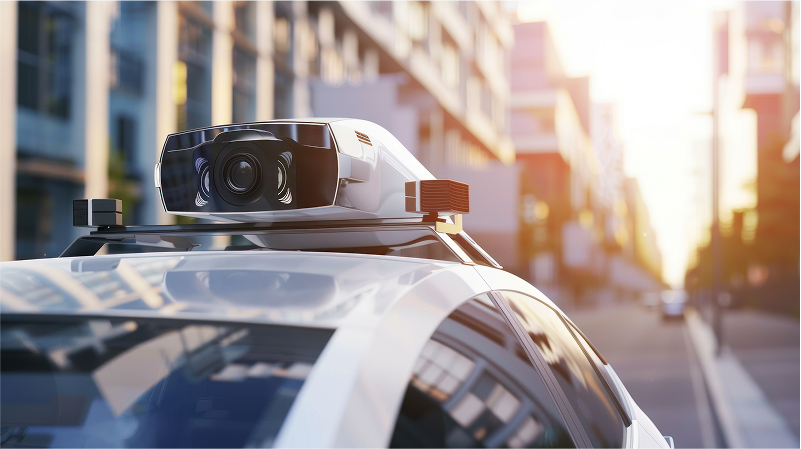







State of Autonomous Vehicles: 2025’s AV Push Toward a Driverless Future
The world of autonomous mobility isn't just evolving—it's accelerating at breakneck speed. From San Francisco to Shanghai, driverless cars can now be seen navigating traffic, and robotaxis and autonomous shuttles are becoming more common. 2025 is shaping up to become a watershed year for the autonomous vehicle industry as new launches and expansions are being announced.
This transportation revolution is backed by tech giants and automotive innovators like Google’s Waymo, Amazon’s Zoox, Uber, Tesla, Alibaba, and Baidu, with strategic partnerships, cutting-edge technology, and billions spent on perfecting systems that can outperform human drivers.
As psychological barriers crumble and regulatory frameworks adapt to promising safety data, we stand at the threshold of a fundamental shift in how humanity moves.
Who is leading the charge? What’s next for the industry? Let’s dive in:

Robotaxi expansion - Waymo's and Uber tie-in
Waymo, a subsidiary of Google’s Alphabet, has been at the forefront of autonomous mobility in the US for a while now. In late 2024, Waymo expanded its autonomous taxi partnership with Uber to include Austin and Atlanta, building upon their initial collaboration in Phoenix. This partnership allows these two leaders in shared mobility to play to each other’s strengths, allowing Uber users to hail Waymo's autonomous vehicles directly through the Uber app, enhancing accessibility to self-driving technology.
In this collaboration, Waymo provides the driverless cars and handles roadside assistance and customer service, while Uber brings in the customers.

Uber is leveraging its huge install base to future-proof and actively expand its presence in autonomous mobility, weaving a web of partnerships in the field. Recent announcements include WeRide in Abu Dhabi launched in December 2024 (with a human safety driver); and Wayve out of the UK, as well as a collaboration with May Mobility and Chinese startup Momenta. Uber is also collaborating with Avride to introduce autonomous delivery robots in cities like Dallas and Austin.
One partnership not in the stars, at least for now, is between Uber and Tesla, who prefers to go at it alone.
Tesla and Amazon’s Zoox are betting on themselves, and building their own autonomous services
Tesla announced very ambitious plans for autonomous mobility. In October 2024, it unveiled the Cybercab, a two-seater robotaxi designed for urban transportation.
Tesla has its own distinct vision for an autonomous car, relying on software and a much cheaper, camera-only, sensor array, backed by the vast data it has from all its vehicles already on the road. Data used to train its AI driver.
Tesla believes it can go toe-to-toe with their sensor-heavy competitors. But so far, Tesla has only been successful in reaching level 3 autonomy, allowing drivers to take their hands off the wheel and letting the car drive itself, but still requiring a driver.
This presents a great test case for the industry: comparing two approaches and seeing which one will prevail—Tesla's big fleet without geographical limitations versus Waymo's sensor-heavy, smaller, and geo-fenced fleet that is already offering Level 4 autonomy commercially.
Tesla plans to launch robotaxis as early as June 2025 in Austin, Texas.

Lyft is also making strides in the autonomous mobility arena through strategic partnerships. Collaborating with May Mobility, Lyft plans to deploy autonomous Toyota Sienna minivans in Atlanta by the end of 2025, with subsequent expansions to Dallas by 2026. Additionally, Lyft is making strides towards introducing its own robotaxi together with with Mobileye and Marubeni aiming to launch in Dallas and scale to other cities in 2026.
Lastly, Zoox, the Amazon subsidiary, has made notable strides in autonomous mobility by developing its purpose-built robotaxi with no traditional controls like a steering wheel. Zoox plans to launch the service in Las Vegas and the San Francisco Bay Area in 2025.
Zoox recently had to face some difficulty with its autonomous vehicle, resulting in a software recall due to unexpected braking, whose impact on its launch schedule remains to be seen.

Autonomous Mobility in Europe and China
China has some of the leading autonomous vehicle services in the world. It is backed by the Chinese government and by national guidelines that provide clear standards for testing, production, and commercial deployment of autonomous vehicles.
Baidu's Apollo Go, Alibaba’s AutoX, SAIC Motors, and US-Chinese partnerships like WeRide and Pony.ai have all committed to deploying large numbers of autonomous vehicles in 2025, with Apollo eyeing international markets too.
In Europe, the autonomous vehicle (AV) landscape takes on a different character, and it is focused on public transport-like, route-centric AVs, such as roboshuttles, robovans, and robobuses. These vehicles are currently primarily deployed in testing sites for short, low-usage trips, often serving underserved areas.
Interestingly, Europe is the first to implement multiple autonomous vehicle providers on the same service, breaking silos and providing a unified service. Mobility giant Keolis has had experience operating such a service, using Autofleet to manage a multi-provider AV fleet.
But autonomous mobility using cars is not unheard of in Europe, and some providers are already testing robocars there, alongside services being developed in Japan and South Korea.
The AV Challenges: Not Everyone is Winning
Despite all the optimism surrounding autonomous transportation. The autonomous mobility industry still faces many challenges on the road to widespread autonomy.
General Motors' decision to withdraw from the robotaxi market and to cease funding its Cruise division highlights the challenges faced by Western OEMs who need to deal with wary, untrusting regulators, China’s EV lead and government backing, and uncertain profitability, all limiting innovation. Even Waymo is a long way from recouping its vast investments in R&D.
In response to these challenges, some companies have shifted their strategic focus away from passenger transport altogether. Instead, they've pivoted toward autonomous trucking, which offers several distinct advantages, including a simpler operating environment focused on highways with more predictable conditions and fewer unpredictable pedestrians, fixed routes with less complex navigation, better unit economics with more immediate ROI.

Driving the Autonomous Mobility Future
The journey of autonomous mobility continues to push forward, overcoming regulatory hurdles and technological challenges with remarkable resilience. Despite obstacles, the industry is reimagining transportation through unprecedented collaboration and innovation.
At Autofleet, we're at the forefront of this transformative change. Providing comprehensive solutions across the entire service lifecycle. From initial planning and demand simulation to infrastructure investments, fleet policy implementation, ongoing vehicle management, routing, dispatching, booking, and automating operations with cutting-edge technological infrastructure.
Want a deeper dive into this exciting frontier? Download our comprehensive industry summary, featuring rich infographics and a detailed map of the current collaboration networks driving autonomous mobility.
The world of autonomous mobility is dynamic and ever changing. If you want to update us about something we have missed feel free to write us at contact@autofleet.io
Table of сontents
Stay up to date!

Stay Up To Date!




.png)







